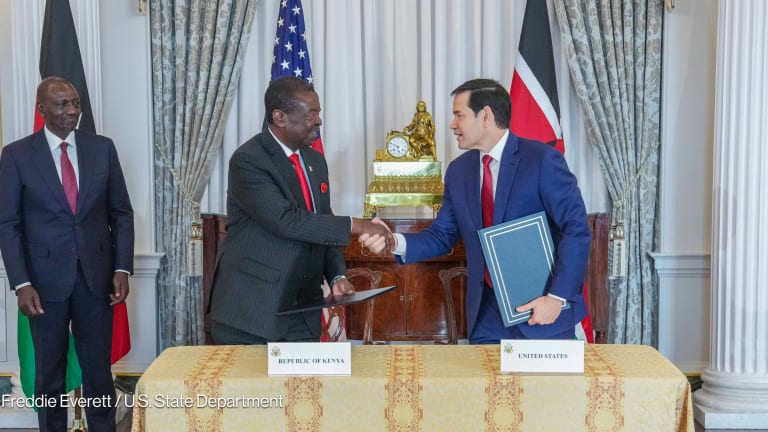
The United States Agency for International Development's Administrator Mark Green recently testified before the House Foreign Affairs Committee on the president’s fiscal year 2019 budget request, pledging his commitment to extend the reach and effectiveness of every dollar provided. In his remarks, Ambassador Green cited his new strategic vision for foreign assistance as one example of how he plans to make USAID’s limited resources go further.
See more related topics:
► US lawmakers frustrated by lack of information about USAID reform plans
► Q&A: Mark Green on why he'll champion innovative finance at USAID
We have heard Ambassador Green articulate the goal of ending the need for foreign assistance by building countries’ capacity to drive their own development — branded by USAID as the “Journey to Self-Reliance.” It’s a goal that is consistent with CARE’s long-held belief that we, as development professionals, should be working ourselves out of a job.
So how do we measure progress toward such a principled yet ambitious goal? USAID has sought external input on how to better identify country readiness for journeys to self-reliance and has consulted with the Advisory Committee on Voluntary Foreign Assistance. I was fortunate to chair the ACVFA working group on metrics for determining transition readiness in a given country, and support USAID’s plan to develop clear indicators to guide the U.S. government’s transition in its relationship with partner countries for many reasons.
Metrics can help provide transparency in decision-making. When appropriately assessed along with other contextual information and matched with country priorities, metrics can help to illuminate a path forward that is more nuanced than budget-driven decisions alone. They can also deepen the partnership relationship with recipient countries by articulating common goals.
As Ambassador Green stated in his congressional testimony, metrics will “serve as mileposts to help us understand where our partners are going, and what role we might play in their journey.”
However, USAID has work to do to ensure transition metrics do just that — further enhance how country-led priorities influence USAID strategies.
Here are our recommendations on how to make sure country-led development is front and center in this process:
1. Use metrics to inform, not dictate, our relationship with partner countries. Quantitative metrics should complement qualitative factors, like knowledge of the local context.
2. Define a specific purpose for the metrics. They should clearly fit within USAID’s existing joint strategic planning processes, starting with the agency’s five-year Country Development Cooperation Strategies.
3. Recognize country ownership as the key. Country demand should be taken into account. USAID must work with local stakeholders throughout the transition process in order to succeed.
4. Get buy-in from across the U.S. government. USAID does not operate alone in partner countries; successful metrics, planning, and eventual transition will be a whole-of-government effort, including Congress.
CARE, the Modernizing Foreign Assistance Network, and the other ACVFA members who participated in this initial consultation applaud USAID’s effort to advance a thoughtful conversation focused on sustainable impact and effectiveness. However, in the current environment, the U.S. government must also weigh the risks that some actors could use metrics to build a case for closing so-called “underperforming” missions. Such concerns are why it is absolutely critical that evidence and rigorous analysis of all factors inform responsible, country-led transitions. Through such an approach, the U.S. has the potential to more effectively support partner countries on their development journey.








